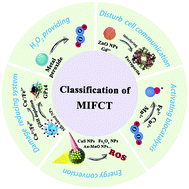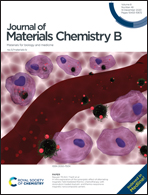Bioactive metal-containing nanomaterials for ferroptotic cancer therapy
Abstract
The clinical performance of the current cancer therapies is still far from satisfactory. The emerging ferroptosis-driven therapy strategies reignite the hope of chemotherapy in tumor treatment due to their incredible tumor suppression. Among ferroptosis-based cancer therapies, metal elements have attracted remarkable attention due to their inherent physicochemical properties in inducing ferroptosis of tumor cells quickly and strongly without complex cellular signal transduction. Although the discovery and applications of ferroptosis for tumor treatment have been discussed in many reviews, the unique advantages of metal-containing nanomaterials interfering ferroptotic cancer therapies (MIFCT) have seldom been mentioned. Here, we outline the latest advances of MIFCT comprehensively. Firstly, the functions of different kinds of metal elements or their ions are introduced to illustrate their advantages in MIFCT. Secondly, the emerging metal-containing nanomaterials that are designed to achieve ferroptosis-driven therapy are overviewed, including their ability to boost the Fenton or Fenton-like reaction for reactive oxygen species generation, act as hydrogen peroxide self-providers, damage the reducing system, and disturb cellular communication. Moreover, metal-containing nanomaterials with external energy conversion features for MIFCT are discussed. Finally, the future expectations and challenges of MIFCT for clinical cancer therapy are spotlighted.

- This article is part of the themed collection: Journal of Materials Chemistry B Recent Review Articles


 Please wait while we load your content...
Please wait while we load your content...